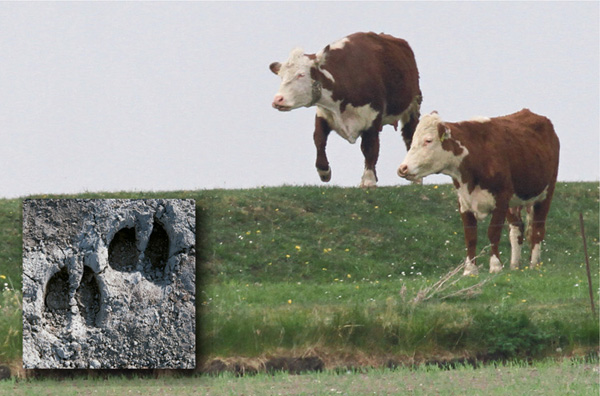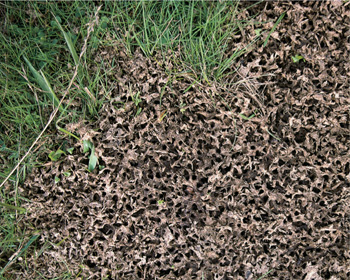
Bos taurus
Cattle, like deer, have two toes. so their tracks can be confused with those of deer, especially Elk. But cattle normally graze together in meadows, so you will always find numerous tracks in one place; they also trample distinct rutted paths in fields and meadows.
The size and shape of tracks vary greatly according to breed. Overall, they are broad and round, on average 10–12 cm long and 9–10 cm wide. The single hoof is concave at the front and convex at the back; you normally cannot see both toes in the footprints.
Elk footprints are usually more pointed, somewhat larger, and the stride is also longer; moreover, elk are solitary and their tracks would not be restricted by a fence line.
Cattle scat, ‘cowpat’, is dark brown and very moist when fresh. It is found as a plate-sized flat pile but quickly dries to a light brown or greyish mound.
Cow tracks never show the imprint of the dew claw. AK; inset, EHA.

Many insects lay eggs in cowpats. When the insects emerge from the larval stage, they bore through the edge of the cowpat, leaving small circular holes.
Insect larvae and worms attract many predators to cowpats: Carrion Crows, Rooks, Starlings, and Curlews will forage in cowpats for larvae and worms; Western Hedgehogs can completely tear them apart when foraging, and Eurasian Badgers will flip them over in the hunt for a meal.
A cowpat with holes from insects that have emerged. NPHH.
